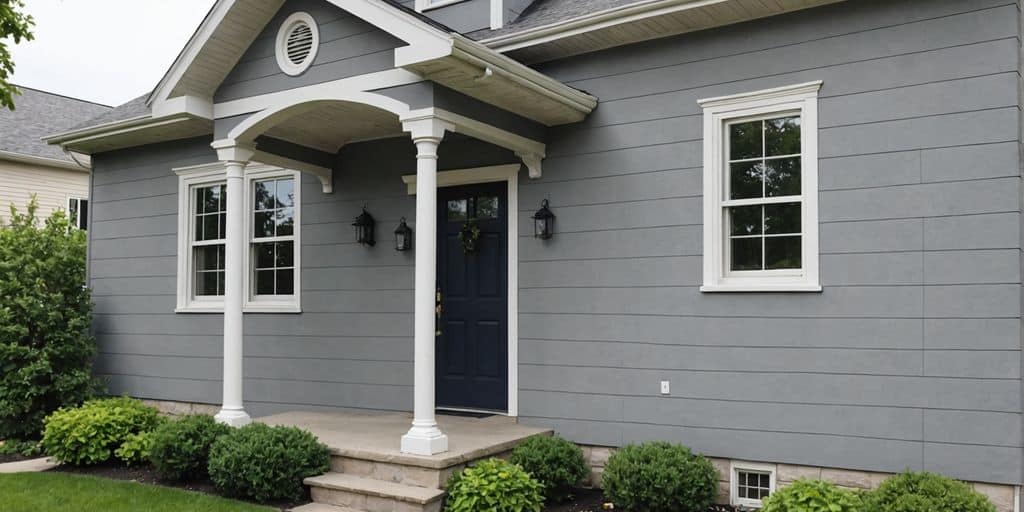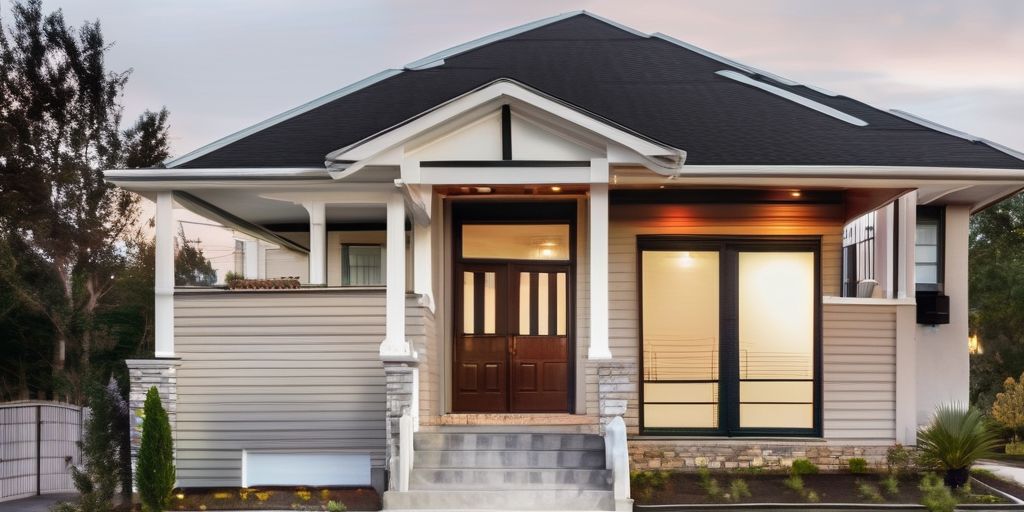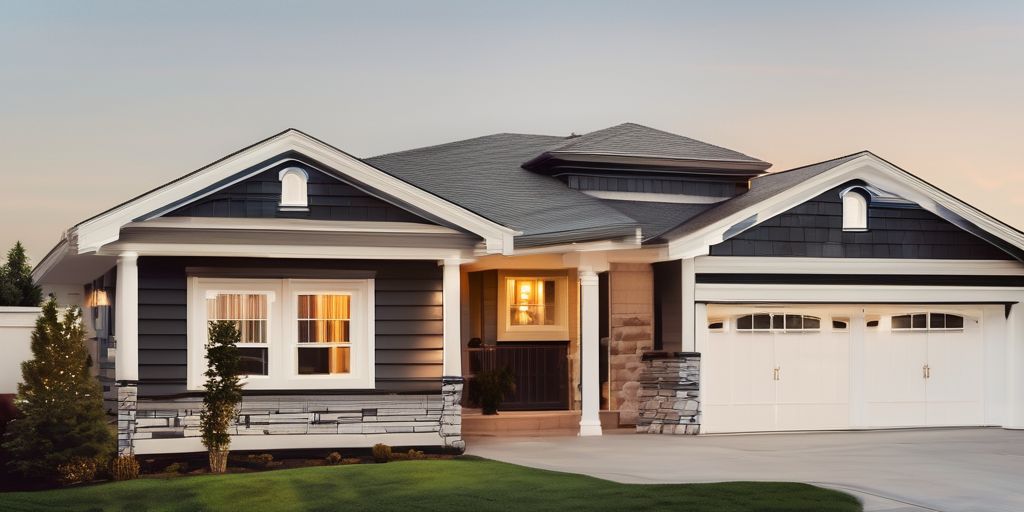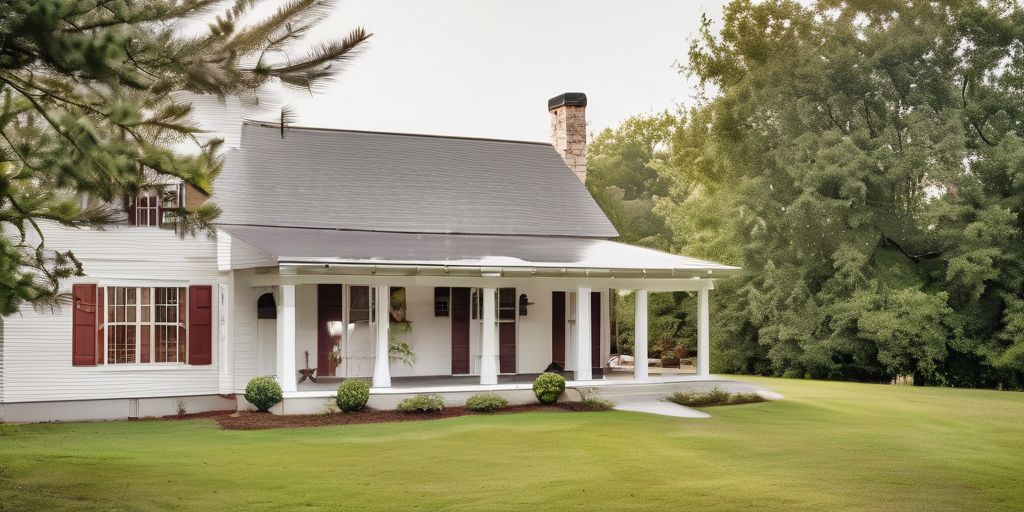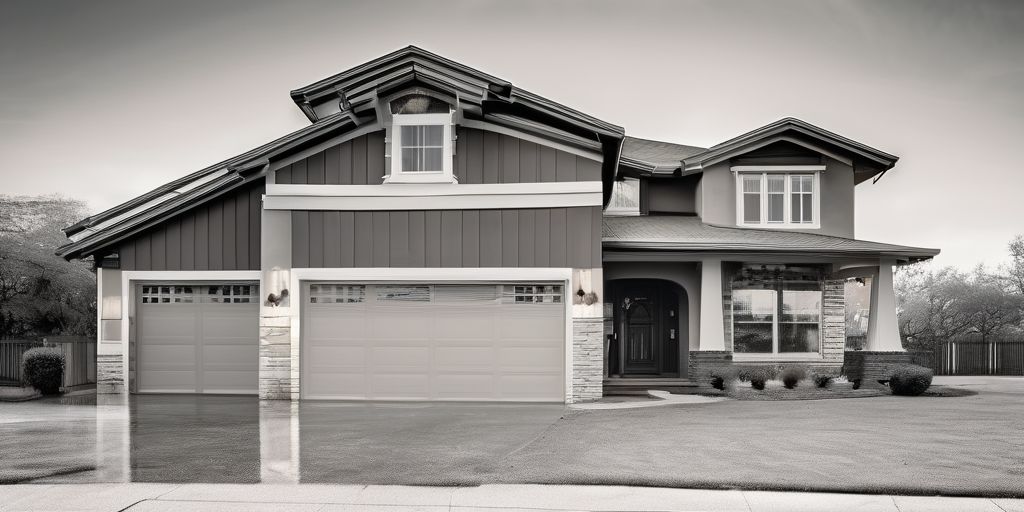Spray painting rough surfaces in Oakville requires a mix of skill, the right tools, and an understanding of local conditions. Whether you’re a professional or a DIY enthusiast, knowing the best techniques can make a big difference. This guide will help you navigate the complexities of spray painting, from preparation to execution, ensuring a smooth and even finish every time.
Key Takeaways
- Proper surface preparation is crucial for a successful spray painting job, including cleaning, sanding, and priming.
- Using multiple thin coats instead of one thick coat helps prevent drips and ensures even coverage.
- Maintaining a consistent angle and distance from the surface is essential for achieving an even finish.
- Weather conditions, such as temperature and humidity, play a significant role in the success of a spray painting project.
- Spray painting contributes to Oakville’s economy by providing jobs and supporting local businesses.
Advanced Techniques for Spray Painting Rough Surfaces
Spray painting rough surfaces can be challenging, but with the right techniques, you can achieve a professional finish. Here are some advanced methods to help you get started.
Preparation Steps for Rough Surfaces
Proper preparation is crucial for a successful paint job. Follow these steps to ensure your surface is ready:
- Cleaning: Remove all dirt, dust, and grime from the surface. A slightly damp cloth can be effective for dust removal. For more stubborn grime, consider using a solution of TSP (trisodium phosphate) or a less toxic substitute.
- Sanding: Use fine-grit sandpaper to gently scuff the surface. This creates a texture that helps the paint stick better. Pay special attention to any irregularities, aiming for a uniform surface.
- Repairing: Fill in any cracks or holes with appropriate fillers to ensure an even surface.
- Priming: Apply a primer to improve paint adhesion and to help achieve a uniform finish.
Remember, never paint over a dirty surface. The paint won’t adhere properly, and the finish will look substandard.
Layering Techniques for Textured Finishes
Achieving a smooth finish on textured surfaces requires patience and the right approach:
- Multiple Light Coats: Apply multiple thin coats rather than one heavy coat to avoid runs and pooling.
- Consistent Distance: Keep the spray can 10”-12” from the surface throughout the application.
- Even Sweeping Motion: Move back and forth over the area, overlapping each pass by 30%-50% to avoid gaps and ensure coverage.
Optimal Angle and Distance for Even Coverage
Maintaining the right angle and distance is key to even coverage:
- Angle: Hold the spray gun at a consistent angle, usually perpendicular to the surface.
- Distance: Maintain a steady distance of 10”-12” from the surface to avoid uneven application.
- Motion: Use a controlled, back-and-forth motion, overlapping each pass by about 50% to ensure even coverage.
The key to mastering spray painting on textured surfaces is to understand and respect the unique characteristics of each material. By doing so, you can ensure that your paint job is not only beautiful but durable as well.
The Economic Impact of Spray Painting in Oakville
Contribution to Local Employment
Spray painting in Oakville provides numerous job opportunities for skilled workers. This trade requires a diverse skill set, including precision, an understanding of materials, and an eye for aesthetics. These skills are honed through experience and contribute to the high-quality services offered in the community. The economic impact of the spray painting industry extends beyond immediate job creation. It also supports related sectors such as manufacturing, retail, and maintenance services.
Supporting Local Businesses
The spray painting industry helps to circulate money within the Oakville economy, strengthening its financial health. By fostering a network of local businesses, the industry ensures that money spent on spray painting services stays within the community. This interconnectedness supports local suppliers and service providers, creating a robust economic ecosystem.
Economic Benefits of Property Maintenance
Spray painting serves as a vital component in maintaining the appearance and longevity of properties in Oakville. Proper application of paint can protect surfaces from the elements and contribute to the overall aesthetic appeal of a neighborhood. Here are some key points to consider:
- Sustainability: Choosing eco-friendly coatings not only preserves the property but also aligns with Oakville’s environmental values.
- Durability: High-quality spray paint creates a uniform, long-lasting finish that withstands weather changes and reduces the frequency of repaints.
- Curb Appeal: A well-executed spray paint job can significantly enhance the visual impact of a property, increasing its value and appeal.
In Oakville, the emphasis on property maintenance through spray painting is not just about preservation but also about integrating man-made structures with the surrounding environment in a harmonious way.
Choosing the Right Equipment for Spray Painting
Types of Spray Guns and Their Uses
Selecting the right spray gun is crucial for achieving a professional finish. Here are some common types:
- Airless Sprayers: Ideal for larger projects, these sprayers can handle thick paints and provide a smooth finish.
- HVLP (High Volume Low Pressure) Sprayers: Best for smaller tasks, these sprayers offer precise control and minimal overspray.
- Compressed Air Sprayers: Versatile and easy to use, suitable for a variety of surfaces.
Each type of spray gun has its own set of advantages, so choose one that fits your project needs.
Selecting the Best Paint for Rough Surfaces
When painting rough surfaces, the type of paint you choose can make a big difference. Here are some tips:
- Use high-quality paint: This ensures better adhesion and durability.
- Opt for paints specifically designed for textured surfaces.
- Consider the environment: For outdoor projects, weather-resistant paints are a must.
Maintenance Tips for Spray Equipment
Maintaining your spray equipment is essential for consistent results. Here are some key tips:
- Regular Cleaning: Always clean your nozzles after use to prevent clogs.
- Inspection: Frequently check for signs of wear and tear.
- Proper Storage: Store your equipment in a clean, dry place to avoid rust and contamination.
Consistency in spray painting is not just about skill; it’s about the reliability of your equipment. Treat your tools with care, and they will serve you well in delivering the smooth and consistent finish your projects deserve.
Weather Considerations for Spray Painting in Oakville
Ideal Temperature and Humidity Levels
Achieving the best results in spray painting requires careful consideration of weather and temperature. The ideal conditions for spray painting involve a delicate balance of temperature and humidity. Specifically, the ambient temperature should be between 40 to 80 degrees Fahrenheit, with a humidity level of 40 to 50 percent. These conditions help ensure that the paint dries evenly and adheres properly to the surface.
In Oakville, it’s advisable to choose cooler parts of the day for painting, especially when working with materials like aluminum siding, to prevent a patchy finish. Moreover, using weather-resistant products can provide long-term protection against the region’s weather extremes.
- Temperature Range: 40 – 80 degrees Fahrenheit
- Humidity Level: 40 – 50 percent
It’s also important to note that temperatures should be above 35 degrees Fahrenheit before commencing a spray painting project. This is to guarantee that the paint can set correctly without being affected by the cold. However, one should be cautious not to paint in direct sunlight or when surfaces are too hot, as this can lead to suboptimal results.
Seasonal Timing for Best Results
Choosing the right time for spray painting in Oakville is crucial for ensuring the best finish and longevity of your paint job. Here are some guidelines to help you plan your projects:
- Monitor the weather forecast closely to avoid rain, excessive wind, or humidity that can affect paint application and drying.
- Aim for a temperature range between 10 to 25 degrees Celsius, which is ideal for spray painting. Extreme temperatures can lead to poor adhesion and uneven drying.
- Consider the time of day; early morning or late afternoon can provide the most stable conditions.
While there’s no one-size-fits-all answer, generally, the best months for spray painting in Oakville are from late spring to early fall, when weather conditions are most favorable.
Remember to account for the specific requirements of your paint and project. Some paints may have different temperature and humidity tolerances. Always check the manufacturer’s recommendations before beginning your work.
Adapting Techniques to Local Climate
Oakville’s proximity to Lake Ontario can influence local weather patterns, making it essential to monitor forecasts closely before commencing a spray painting job. Here are some tips to adapt your techniques to the local climate:
- Use weather-resistant paints to ensure long-lasting results.
- Regularly check weather forecasts to plan your painting schedule effectively.
- Be prepared to adjust your techniques based on the current weather conditions, such as wind speed and humidity levels.
By considering these weather factors, you can achieve a high-quality finish and ensure the longevity of your spray painting projects in Oakville.
Common Mistakes to Avoid in Spray Painting
Spray painting can be a quick and efficient way to cover large areas, but it requires precision and attention to detail. Here are some common mistakes to avoid:
Inadequate Surface Preparation
Proper surface preparation is essential for a successful spray painting job. Failing to clean, sand, and prime the surface can lead to uneven paint application and poor adhesion. Always ensure the surface is clean and smooth before you start painting.
Incorrect Application Techniques
Using the wrong techniques can result in a subpar finish. Common errors include holding the spray gun too close or too far from the surface, moving the gun too quickly or too slowly, and not overlapping each pass by 30%-50%. Maintain a consistent distance and use a steady, sweeping motion for best results.
Ignoring Weather Conditions
Weather conditions like humidity and temperature can significantly affect the outcome of your spray painting project. High humidity can cause the paint to not dry properly, while extreme temperatures can affect paint consistency. Always check the weather forecast and choose stable conditions for painting. In Oakville, for example, the weather can be unpredictable, so it’s crucial to plan accordingly.
Mastering Spray Gun Handling for Professional Results
Maintaining Consistent Distance
Keeping a steady distance between the spray gun and the surface is crucial. Maintaining a consistent distance helps avoid runs and sags in the paint. Typically, you should keep the spray gun about 10-12 inches away from the surface. This distance ensures even coverage and a smooth finish.
Controlling Motion and Overlap
To achieve a professional finish, control your motion with a steady, back-and-forth movement. Overlap each pass by about 50% to ensure even coverage. This technique helps avoid streaks and gaps, giving you a uniform coat. Practicing this motion can significantly improve your results.
Adjusting Techniques for Different Conditions
Different conditions require different techniques. For instance, in humid weather, you might need to adjust your spray pattern to prevent the paint from running. Similarly, windy conditions can affect your spray direction. Always be prepared to adapt your technique based on the environment. In Oakville, where weather can be unpredictable, this skill is particularly valuable.
Remember, mastering spray gun handling is about practice and understanding your equipment. The more you practice, the better your results will be.
Surface Preparation for a Successful Spray Painting Job
Proper surface preparation is the cornerstone of a successful spray painting job. Ensuring the surface is clean, smooth, and ready to accept paint is critical for achieving a high-quality finish. Here are some key steps to follow:
Cleaning and Sanding Techniques
Achieving a professional finish when spray painting begins with meticulous preparation. Cleaning and sanding are foundational steps that ensure the paint adheres well and looks smooth. Here’s how to get started:
- Cleaning: Remove all dirt, dust, and grime from the surface. A slightly damp cloth can be effective for dust removal. For more stubborn grime, consider using a solution of TSP (trisodium phosphate) or a less toxic substitute.
- Sanding: Use fine-grit sandpaper to gently scuff the surface. This creates a texture that helps the paint stick better. Pay special attention to any irregularities, aiming for a uniform surface.
Remember, never paint over a dirty surface. The paint won’t adhere properly, and the finish will look substandard.
After cleaning and sanding, it’s crucial to remove any residual dust. A clean, dry cloth or an air compressor can be used to ensure the surface is completely dust-free before proceeding to the next steps of sealing and drying. Local climate conditions may influence the drying time, so plan accordingly.
Importance of Priming
Applying a primer is a must for painting metal. If the metal surface has been painted before, you’ll need to remove old paint, rust, debris, grease, and dirt. Priming helps in improving paint adhesion and achieving a uniform finish. Here’s why priming is essential:
- Adhesion: Primer creates a bond between the surface and the paint, ensuring the paint adheres properly.
- Uniformity: It helps in achieving a smooth and even finish by covering imperfections.
- Protection: Primer can protect the surface from rust and other damages.
Repairing and Smoothing Surfaces
Before you start painting, it’s important to repair any cracks or holes in the surface. This ensures an even and smooth finish. Here are some steps to follow:
- Fill Cracks and Holes: Use appropriate fillers to fill in any cracks or holes.
- Sand the Surface: After filling, sand the surface to make it smooth and even.
- Clean Again: Ensure the surface is clean and free from dust before you start painting.
Attention to detail in the preparation stage can significantly impact the longevity and appearance of the paint job.
In Oakville, where the weather can fluctuate, it’s especially important to consider the humidity and temperature during the preparation phase. These factors can affect how well the paint adheres and dries.
Getting your surface ready is the first step to a great spray painting job. Clean the area well, remove any old paint, and fix any cracks or holes. This makes sure the new paint sticks well and looks smooth. Want to learn more tips and tricks? Visit our website for more details!
Conclusion
Spray painting rough surfaces in Oakville can be a rewarding task when done correctly. By mastering advanced techniques and understanding the local climate, you can achieve professional results that enhance the beauty and longevity of your projects. Remember, preparation is key—cleaning, sanding, and priming your surfaces will make a significant difference. Also, consider the economic benefits of spray painting, which supports local jobs and businesses. Whether you’re a homeowner looking to refresh your property or a professional aiming to perfect your craft, effective spray painting can make a lasting impact on Oakville’s community and aesthetics. Let’s continue to paint a brighter future together!
Frequently Asked Questions
What kind of preparation is needed before spray painting rough surfaces?
First, clean the surface to remove dirt and grime. Then, sand it to make it smooth. Finally, apply a primer to help the paint stick better.
What are the best techniques for layering paint on textured surfaces?
Apply several thin coats instead of one thick coat. This helps avoid drips and gives a smoother finish.
How should I hold the spray gun for even coverage?
Keep the spray gun at a consistent distance from the surface, usually about 6-12 inches. Move your hand in a steady, back-and-forth motion.
When is the best time of year to spray paint in Oakville?
The best time is from late spring to early fall. The weather is usually warm and dry, which helps the paint dry properly.
What are common mistakes to avoid when spray painting?
Common mistakes include not preparing the surface properly, spraying too close or too far from the surface, and not considering weather conditions like humidity and wind.
What kind of equipment is best for spray painting rough surfaces?
Use a high-quality spray gun and choose paint that is suitable for rough or textured surfaces. Make sure to maintain your equipment by cleaning it after each use.

